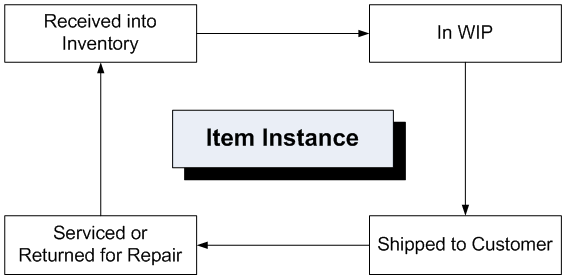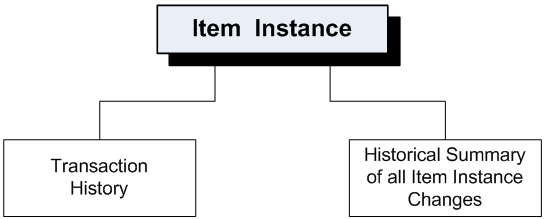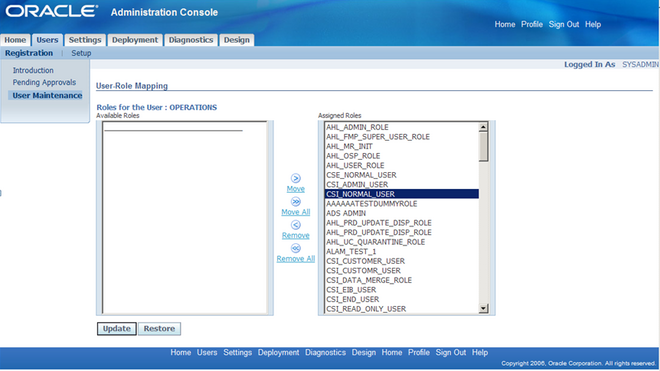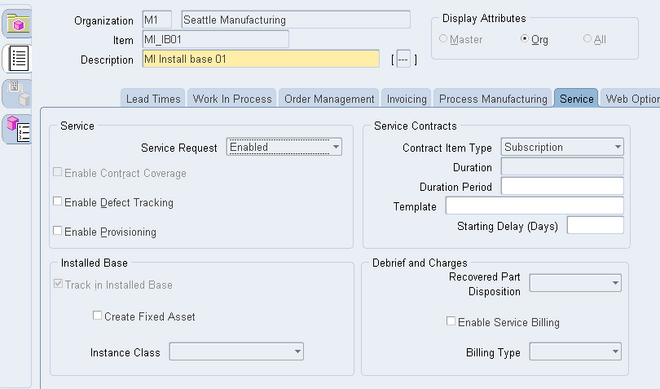
Item Instance Attribute Change Tracking
Oracle Installed Base is a centralized repository of information for an item instance and its tracking details including location, status, ownership, party role, and contact relationships. It also supports the creation and maintenance of Oracle Installed Base configurations.
Counters can be tied to item instances so that usage can be captured. For example, if an item instance is an electrical meter, then counters can be used to store the meter reading, thus recording the usage that in turn generates revenue.

Oracle Installed Base records a history of changes to item instances.
For each item instance in Oracle Installed Base, a history of transactions is tracked and stored. Given a particular time frame, these transactions and the state of the attributes during that time can be viewed.
The transaction history includes a list of inventory, work in process, order management, and other transactions affecting an item’s tracking attributes.


 All All the functionalities of installed base module can be accessed with Installed Base User responsibility. And to access the’ Installed Base User’ responsibility’ the user must be assigned to CSI_NORMAL_USER role.
All All the functionalities of installed base module can be accessed with Installed Base User responsibility. And to access the’ Installed Base User’ responsibility’ the user must be assigned to CSI_NORMAL_USER role.
Recent Comments